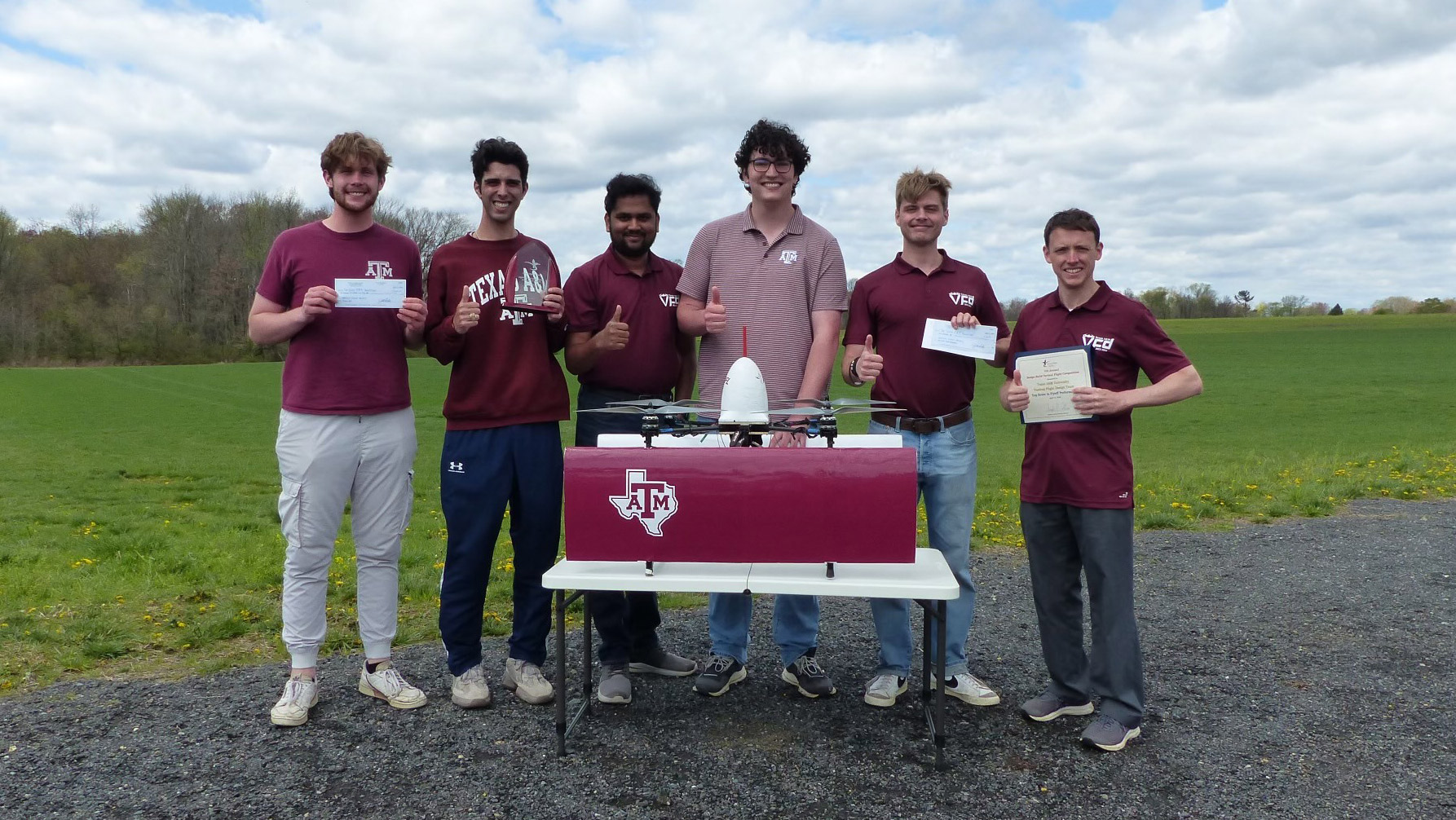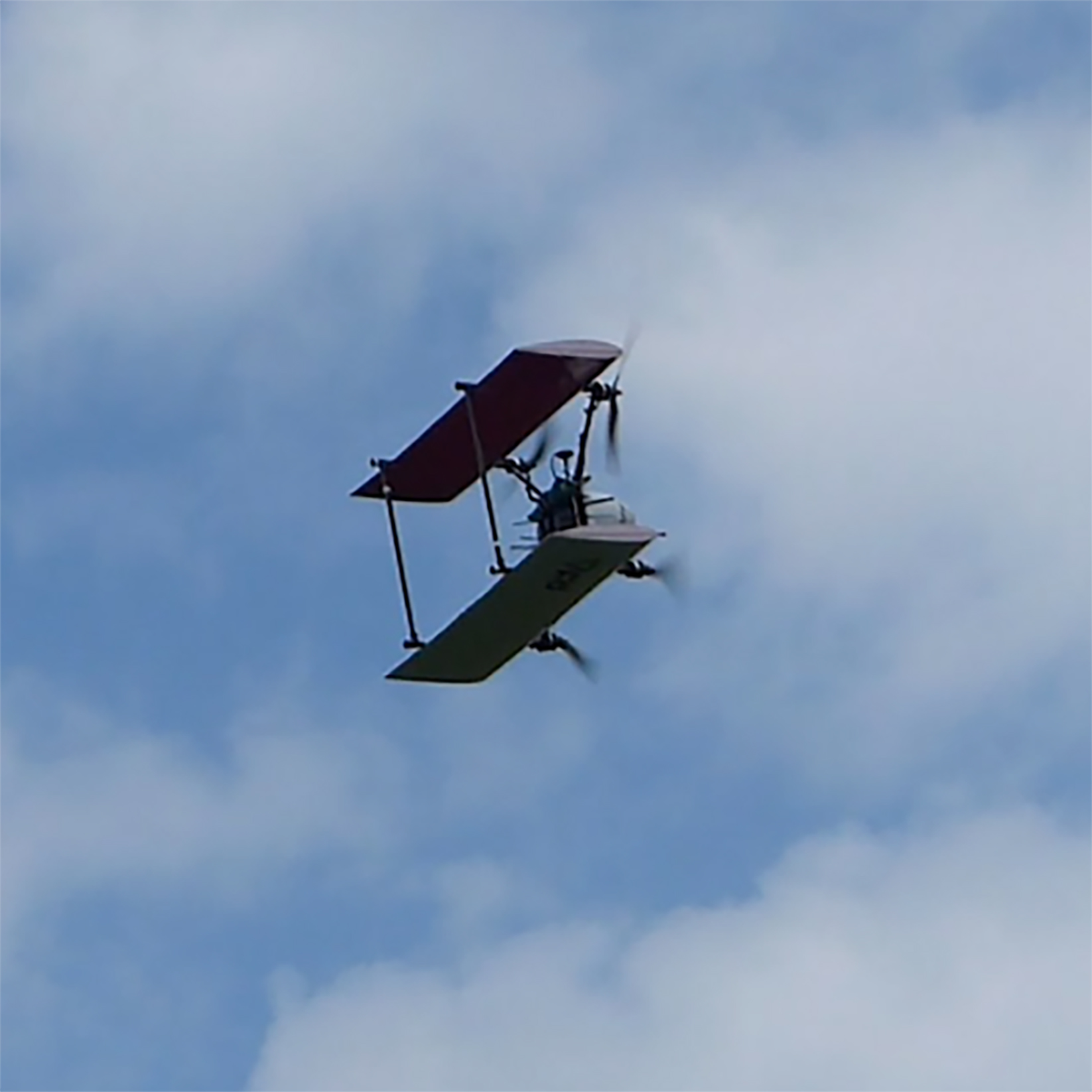
The Vertical Flight Design Team, a group of undergraduate students from the Department of Aerospace Engineering, won first place overall and first place for fly-off at the 2024 Vertical Flight Society Design-Build-Vertical Flight competition.
This is the first time a Texas A&M team has participated in this competition. After carefully considering the competition's requirements and mission, the team, led by Jonathan Lawler and Amit Gadag, selected an unconventional VTOL configuration — a quadcopter biplane. This configuration is unique in the sense that it combines the mechanical simplicity of a quadcopter with the forward flight efficiency and speed of a biplane, combining the best of both worlds.
The team was split into sub-teams and allotted specific tasks in designing and fabricating the aircraft, such as frame design, aerodynamic optimization, etc. The team met with their advisor weekly to discuss and receive feedback on the design.
The coursework provided by the Department of Aerospace Engineering laid the foundation for developing the skills necessary for designing and building a VTOL aircraft and ensured that team members knew how to work effectively as a group.

Despite the new and relatively inexperienced nature of the team at the start, the team successfully designed and built a quadcopter biplane through firm dedication and passion for their project. The final design had a gross take-off weight of 12 lbs. (2lb payload included), with strong flight performance, both piloted and autonomous.
The team conducted numerous flight tests at the RELLIS campus (Link for flight test video: https://www.youtube.com/watch?v=dIOzpcCBtnU).
In addition to the design of the aircraft, the team was also tasked with producing a technical report and presentation to describe the analyses, fabrication methods, and testing conducted. Not only did the team win first place overall against teams from 11 universities including University of Maryland, Embry-Riddle Aeronautical University, and the Georgia Institute of Technology, but they also won the Best Fly-off Award for setting the fastest lap time of 67 seconds and achieving the highest number of laps (8) in 10 minutes.
Winning this competition validates months of effort and sleepless nights. The team offers this piece of advice for those interested in joining: Do not hesitate to push your boundaries; you will be surprised by what you can achieve.
The team would like to thank Dr. Moble Benedict for advising, Dr. David Coleman for piloting the aircraft and providing valued insights, Mr. Bradley Worsham for his financial aid, Dr. Ivett Leyva and the AERO Advisory Board for their financial aid, the Good Bull Fund through the Office of the President of Texas A&M University, Office of Naval Research for supporting some of the development aspects of the aircraft, and family and friends for their love and support.